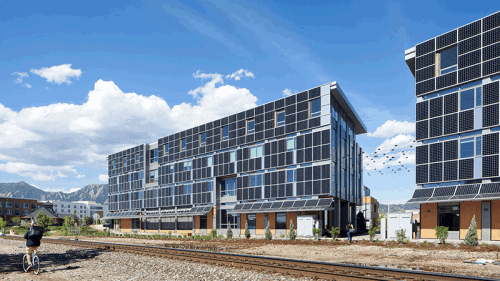Experts discuss the shortage of housing that is affordable to middle-income households, the challenges of increasing the supply, potential solutions, the influence on people’s preferences for housing options, and the need for more effective advocacy for increasing housing density.
Why do so many cities suffer from a shortage of housing that is affordable to middle-income households?
James Feild: There are very few markets where enough for-sale and rental housing is being produced to meet demand. The supply is just not matching up. Subsidy programs are available for people who earn less than 60 percent of area median income [AMI], but there is the forgotten middle: households that earn too much money to qualify for subsidies but that don’t earn enough money to afford the housing that’s available. In southern California, the gap is huge—if you earn only 100 percent of area median income, it’s very difficult to find anything you can afford.
Matt Slepin: We have a housing supply issue in many of our cities, particularly in San Francisco, which is as bad as it gets. The supply issue drives costs up. The profit margin is tougher to rationalize for the development of housing for middle-income households than it is for luxury or affordable housing. Luxury housing is being built at one end of the spectrum and subsidized housing is being built at the other end, and newly built middle-income housing is being missed. I think municipalities should address displacement and affordability issues using other strategies than placing rules on new development. At the end of the day, our cities will inevitably densify, so the goal is to densify wisely, consciously, balancing as many social issues as you can.
Peter Nichol: There are no nationally directed subsidy programs to help middle-income households, those earning between 60 and 120 percent AMI. In addition, local approvals processes tend to put constraints on development or redevelopment. There isn’t a tightly defined political constituency to support market-rate or mixed-income apartment development for middle-income households. But that is beginning to change. As the problem gets more acute, it’s creating a political response, most notably in the emerging “Yes In My Back Yard” or “YIMBY” initiatives. These YIMBY groups are among the first to offer a vocal pro-development perspective and will now even sometimes show up at entitlements hearings or in a public approvals processes. It’s still, however, a small movement compared to the Not In My Back Yard (NIMBY) constituencies.
David Schwartz: It’s extraordinarily challenging to produce housing for the middle class, because it’s very expensive to build today. Land costs have gone up, and construction costs have gone up significantly. The result is that most of the new development over the past five years has been Class A, luxury, multifamily housing. In suburban markets, local communities have amped up their NIMBYism. As a result, in the places where larger tracts of land would otherwise allow developers to build at a lower cost, there has been less supply. In this real estate cycle, the urban areas have been YIMBYs—Yes In My Back Yard.
What creative solutions are you hearing about?
Nichol: Most of the solutions to these issues seem to be happening at the local level rather than at the federal level. Seattle is a good example. The city has an organized process to try to create high-density development zones on transit corridors, and as a result, even though Seattle has many of the same economic factors that San Francisco has, it has significantly outperformed the Bay Area in terms of housing production. That’s made possible by concentrated efforts at zoning and also a public approvals process with a specific goal of producing more housing for a range of incomes. In contrast, just a few years ago, San Francisco had been considering a housing moratorium for the Mission District, which would have stopped all housing production there until a plan could be made to address affordable housing. That ultimately didn’t move forward, but that is an example of the stifling factors that we see in some high-cost urban markets.
Feild: More and more cities are providing opportunities for renters in the workforce housing price range to draw on a subsidy in the form of a tax abatement or payment in lieu of taxes. But some of the places that have the worst supply problems have the most extended entitlement processes, with a lot of opportunities for court challenges and the like. So there are constraints on supply that often offset the subsidies. I know developers who have built properties in the Bay Area, and in some cases it took six or seven years to get entitlements. Costs escalated during that time. They did end up building those projects, but at a vastly different cost structure than when they started.
Schwartz: Local governments are trying to attack the problem through various local ordinances, such as inclusionary zoning and other ways to force developers to provide affordable housing. I think those approaches only raise the cost of providing housing. Instead, policies that encourage the supply of housing would increase competition and naturally reduce rents. Another strategy is to support naturally occurring affordable housing—to upgrade existing housing to make it feel like new product for middle-income households. It may not be as luxurious and amenitized as brand-new housing, but it can come close.
Slepin: Government subsidies are focused on housing for low-income people, and so we wind up building new housing for them, which is very expensive. We might be able to spread those subsidies much further if some of them went toward acquiring existing housing. If a municipality sees a lower- or mixed-income neighborhood giving way to upper-end housing, it can stabilize some of the housing stock for middle-income people. The way to do that is not through rent control, which forces landlords to pay for the social goal of stabilizing neighborhoods, but through a community strategy, so that as multifamily housing is put up for sale, nonprofit organizations could acquire some of it for the workforce, with rent restrictions in place. Some communities are already starting funds for this purpose, as in Austin, Texas, and there has been talk of it in Silicon Valley. Accessory dwelling units are another idea. San Francisco recently passed legislation to allow property owners to add units to existing residential buildings.
Are middle-class households changing their housing preferences because of the scarcity of supply? What trade-offs are they making?
Slepin: More than before, people prefer living in urban areas. It’s not a fad, it’s here to stay. I recently visited Washington, D.C., and I have never seen so much development going on there before. Young people, and people of all ages, want to live in an urban environment and have access to its amenities within walking distance. That has been a big change over the past 20 years. As a trade-off, people are willing to live in smaller spaces, as long as they work well.
Feild: I hadn’t done a lot of research on this, but it seems as if a lot of people are making a transit-oriented development trade, giving up their cars if they can find housing that is convenient to the things they like. Recently, I was sitting in a restaurant at a hotel in Phoenix, and at the table next to me, young people were shopping for an apartment on their laptops. Their top priority was to find housing close to the train so they could rely on their bicycles instead of having to own a car. This was in Phoenix—where temperatures can go past 100 degrees in the summer.
Schwartz: The homeownership rate went from a peak of more than 69 percent to as low as 63 percent in 2016, and that decline has been due to a preference for rental housing. I think it’s also driven by demographics and the choice to start families later in life. The difficult mortgage market has contributed, too. Having the flexibility of renting has been a preference across all demographic groups—it’s not just millennials, it’s also baby boomers and empty nesters.

Little Ajax was initiated by GLUCK+ in response to the overwhelming need for affordable housing in Aspen, Colorado. A unique housing solution located close to the city’s main core, this family-oriented complex is a riff on the traditional courtyard scheme, redefining and expanding what is typically a formulaic architectural typology.
What other factors should real estate developers and municipalities be paying attention to in order to provide more housing for the middle class?
Schwartz: The industry needs to pay more attention to the housing affordability problem. If we don’t address it, then government will, because citizens will vote for people who will help them get affordable housing. Making rent control more stringent is not the answer. Any price control will shut the supply pipeline down very quickly. So the industry needs to voluntarily provide units that are more affordable. Some owners are investing in properties and setting aside a certain percentage of units as affordable units as part of their business plan. We can also encourage municipalities to allow more rental housing in areas where tight supply and high demand have increased rents. Our industry has to do a better job of letting municipalities know that apartments are good for communities.
Feild: One thing that would help is to increase awareness. As an industry, we could do a much better job of making people aware of the positive benefits of having enough affordable housing. If you’re spending 50 percent of your income on rent, there’s a whole list of other things you don’t have any money for, and that has an impact on everybody’s well-being.
Nichol: City governments could develop a big-tent approach that groups market-rate, mixed-income, and affordable housing. That would create a better political backdrop for the policy that we need for approving specific developments, because it would create a critical mass of proponents who will be able to match up against NIMBY groups. More people are recognizing the need for more housing development, even outside very high-cost markets like New York City and Boston and San Francisco. Now awareness is spreading to perhaps the top 50 cities in the country. But the industry has to think carefully about how we message what we do and communicate the positive impacts of housing development. In general, real estate development has a relatively negative public image. Housing should be one of the asset classes that people can relate to most directly and most personally. To be able to effectively communicate that, as this becomes more of a national issue, will be a challenge, but one that we should be engaging in now.
Slepin: I think the industry does a bad job of advocating for itself, because it appears as though our advocacy comes from self-interest. But both nonprofit and for-profit developers are building the cities of tomorrow and want to do a great job. Most people in the industry are trying to help create great neighborhoods. We could do better at positioning ourselves as not the bad guys.
Contributing their insights:
- James Feild, senior vice president, Bank of America Merrill Lynch, Dallas; chair, Affordable
and Workforce Housing Council (Blue Flight) - Peter Nichol, managing director, Pillar Finance, San Francisco; chair, Affordable and Workforce Housing Council (Gold Flight)
- David Schwartz, chief executive officer and chairman, Waterton, Chicago; chair, Multifamily Council (Blue Flight)
- Matt Slepin, managing partner, Terra Search Partners, San Francisco; member,
Multifamily Council (Blue Flight)




